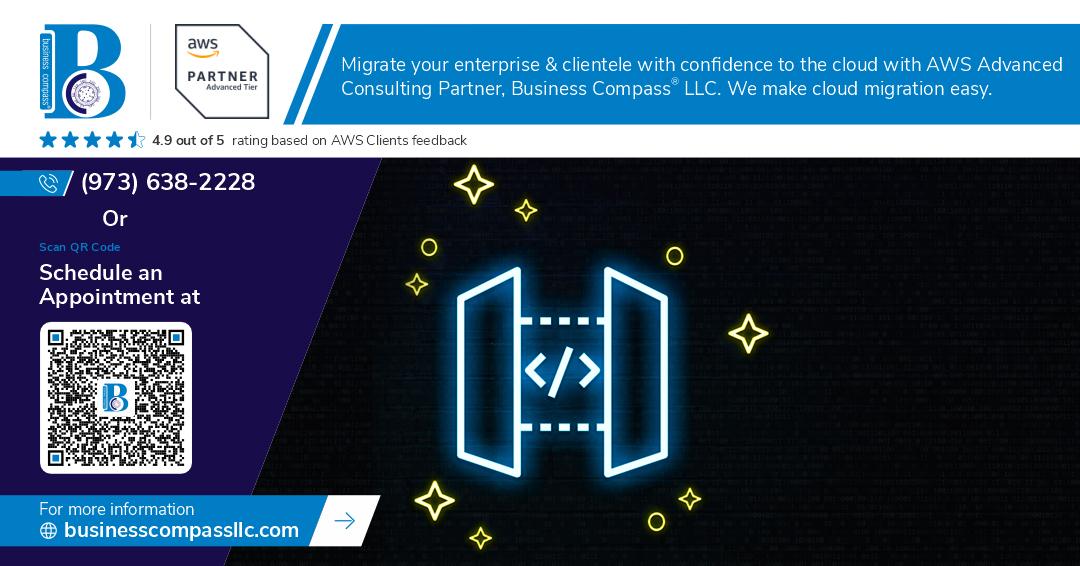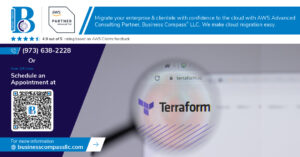🌐 In the ever-evolving landscape of web development and software engineering, API protocols stand as the unsung heroes of modern connectivity. But with a plethora of options available, how do you choose the right protocol for your project?
From the ubiquitous HTTP/HTTPS to the flexible GraphQL, and from the real-time capabilities of WebSocket to the lightweight efficiency of MQTT, each protocol brings its unique strengths to the table. 💪 Yet, this abundance of choice can leave developers feeling overwhelmed and uncertain about which path to take.
In this comprehensive guide, we’ll dive deep into the world of API protocols, comparing and contrasting popular options like REST API, gRPC, and SOAP. We’ll explore their best practices, uncover their strengths and weaknesses, and equip you with the knowledge to make informed decisions for your next project. Whether you’re building a simple web application or a complex IoT ecosystem, understanding these protocols is crucial for creating efficient, scalable, and robust systems. Let’s embark on this journey to demystify API protocols and unlock the potential of seamless communication in your applications! 🚀
Understanding API Protocols
A. Definition and importance of API protocols
API protocols are standardized sets of rules and procedures that govern how different software applications communicate with each other. They define the structure, syntax, and semantics of the messages exchanged between systems. The importance of API protocols cannot be overstated in today’s interconnected digital landscape:
- Interoperability: Enables seamless integration between diverse systems
- Scalability: Facilitates growth and expansion of applications
- Security: Implements robust security measures for data protection
- Efficiency: Optimizes data transfer and resource utilization
B. Key components of API communication
API communication involves several essential components that work together to ensure smooth data exchange:
- Endpoints
- Request methods
- Headers
- Parameters
- Authentication
- Response formats
| Component | Description |
|---|---|
| Endpoints | URLs that represent specific resources or actions |
| Request methods | HTTP verbs (GET, POST, PUT, DELETE) defining the action |
| Headers | Metadata providing additional information about the request or response |
| Parameters | Data sent with the request to customize the API call |
| Authentication | Mechanisms to verify the identity of the client making the request |
| Response formats | Data structures (JSON, XML) for returning information to the client |
C. Evolution of API protocols
The evolution of API protocols reflects the changing needs of modern software development:
- RPC (Remote Procedure Call): Early protocol for distributed computing
- SOAP (Simple Object Access Protocol): XML-based protocol for structured messaging
- REST (Representational State Transfer): Lightweight, scalable architecture for web services
- GraphQL: Flexible query language for efficient data fetching
- gRPC: High-performance RPC framework for microservices
- WebSocket: Full-duplex communication protocol for real-time applications
This progression showcases the industry’s shift towards more efficient, flexible, and performance-oriented protocols to meet the demands of contemporary software architectures and use cases.
HTTP/HTTPS: The Foundation of Web APIs
A. Basic principles of HTTP/HTTPS
HTTP (Hypertext Transfer Protocol) and its secure counterpart HTTPS form the backbone of web communication. These protocols operate on a client-server model, where clients send requests to servers, and servers respond with the requested data.
Key principles include:
- Stateless: Each request is independent of previous requests
- Connectionless: After a request-response cycle, the connection is closed
- Extensible: Custom headers can be added for additional functionality
| Feature | HTTP | HTTPS |
|---|---|---|
| Port | 80 | 443 |
| Security | None | SSL/TLS encryption |
| URL prefix | http:// | https:// |
B. Request-response model
The HTTP request-response cycle follows a specific structure:
- Client initiates a request
- Server processes the request
- Server sends back a response
- Client receives and processes the response
HTTP methods define the type of action:
- GET: Retrieve data
- POST: Submit data
- PUT: Update existing data
- DELETE: Remove data
C. Security features of HTTPS
HTTPS adds a layer of security to HTTP through SSL/TLS encryption. This provides:
- Data confidentiality: Encrypts data in transit
- Data integrity: Prevents tampering
- Authentication: Verifies server identity
D. Best practices for HTTP/HTTPS implementation
To optimize HTTP/HTTPS usage:
- Use HTTPS by default for all communications
- Implement proper caching mechanisms
- Compress responses to reduce bandwidth
- Use appropriate HTTP status codes
- Implement rate limiting to prevent abuse
Next, we’ll explore REST API, which builds upon the HTTP protocol to create a simple and scalable architecture for web services.
REST API: Simplicity and Scalability
RESTful architecture principles
REST (Representational State Transfer) is an architectural style that defines a set of constraints for designing networked applications. The key principles of RESTful architecture include:
- Stateless communication
- Client-server separation
- Uniform interface
- Cacheable responses
- Layered system
| Principle | Description |
|---|---|
| Stateless | Each request contains all necessary information |
| Client-server | Clear separation of concerns between client and server |
| Uniform interface | Consistent resource identification and manipulation |
| Cacheable | Responses can be cached to improve performance |
| Layered | System can be composed of hierarchical layers |
Advantages of REST APIs
REST APIs offer several benefits:
- Scalability
- Flexibility
- Independence from specific technologies
- Simplicity and ease of use
Common REST API methods
REST APIs typically use standard HTTP methods:
- GET: Retrieve resources
- POST: Create new resources
- PUT: Update existing resources
- DELETE: Remove resources
- PATCH: Partially modify resources
Best practices for designing REST APIs
To create effective REST APIs:
- Use nouns for resource naming
- Implement proper HTTP status codes
- Version your API
- Provide clear documentation
- Use pagination for large datasets
- Implement proper error handling
Now that we’ve covered REST APIs, let’s explore GraphQL, a flexible alternative for data querying.
GraphQL: Flexible Data Querying
Core concepts of GraphQL
GraphQL is a query language and runtime for APIs that offers a more efficient, powerful, and flexible alternative to traditional REST. Its core concepts include:
- Schema Definition Language (SDL)
- Queries and Mutations
- Resolvers
- Type System
Here’s a comparison of GraphQL’s key features:
| Feature | Description |
|---|---|
| Schema | Defines the structure of data and available operations |
| Queries | Read operations to fetch data |
| Mutations | Write operations to modify data |
| Resolvers | Functions that determine how to fetch or modify data |
Benefits over traditional REST APIs
GraphQL offers several advantages over REST:
- Flexible data fetching
- Reduced over-fetching and under-fetching
- Strong typing and introspection
- Single endpoint for all operations
- Easier version management
Schema definition and type system
GraphQL’s schema defines the structure of data and available operations. The type system includes:
- Scalar types (Int, Float, String, Boolean, ID)
- Object types
- Enum types
- Interface types
- Union types
Best practices for GraphQL implementation
To optimize GraphQL implementation:
- Design a clear and intuitive schema
- Use descriptive naming conventions
- Implement proper error handling
- Optimize resolvers for performance
- Implement pagination for large datasets
- Use fragments for reusable query parts
- Leverage caching mechanisms
Now that we’ve explored GraphQL’s flexible data querying capabilities, let’s move on to WebSocket, which enables real-time bidirectional communication.
WebSocket: Real-time Bidirectional Communication
WebSocket protocol overview
WebSocket is a full-duplex, bidirectional communication protocol that operates over a single TCP connection. Unlike traditional HTTP requests, WebSocket maintains a persistent connection between the client and server, allowing for real-time data exchange without the need for repeated polling.
Key features of WebSocket:
- Persistent connection
- Low latency
- Efficient data transfer
- Browser support
| Feature | WebSocket | HTTP |
|---|---|---|
| Connection | Persistent | Stateless |
| Communication | Bidirectional | Unidirectional |
| Overhead | Low | Higher |
| Real-time | Yes | Limited |
Use cases for WebSocket
WebSocket is ideal for applications requiring real-time updates and low-latency communication. Some common use cases include:
- Live chat applications
- Real-time gaming
- Collaborative editing tools
- Financial trading platforms
- Live sports updates
- IoT device communication
Advantages over HTTP polling
WebSocket offers several advantages over traditional HTTP polling:
- Reduced latency: Instant data transmission without waiting for polling intervals
- Lower bandwidth usage: Eliminates unnecessary request headers
- Server-initiated communication: Allows servers to push data to clients without requests
- Improved scalability: Fewer open connections and reduced server load
Best practices for WebSocket implementation
To optimize WebSocket performance and reliability:
- Implement proper error handling and reconnection logic
- Use secure WebSocket (WSS) for encrypted communication
- Optimize message size and frequency to prevent overload
- Implement heartbeat mechanisms to detect connection issues
- Consider fallback options for browsers without WebSocket support
Now that we’ve explored WebSocket’s real-time capabilities, let’s examine another event-driven communication protocol: Webhooks.
Webhook: Event-Driven Communication
A. Webhook concept and functionality
Webhooks are a powerful mechanism for event-driven communication between applications. Unlike traditional APIs that require constant polling, webhooks provide real-time updates by sending HTTP POST requests to a predefined URL when specific events occur. This “push” approach ensures efficient and timely data delivery.
B. Differences between webhooks and APIs
| Feature | Webhooks | APIs |
|---|---|---|
| Communication | Push-based | Pull-based |
| Efficiency | More efficient for real-time updates | Less efficient for frequent updates |
| Complexity | Simpler to implement | Can be more complex |
| Data flow | One-way (server to client) | Two-way (client to server and back) |
| Use case | Event-driven scenarios | On-demand data retrieval |
C. Common use cases for webhooks
Webhooks are widely used in various scenarios, including:
- Payment processing notifications
- Version control system updates (e.g., GitHub commits)
- CRM lead notifications
- E-commerce order status changes
- IoT device state changes
D. Best practices for implementing webhooks
To ensure reliable and secure webhook implementations, consider the following best practices:
- Use HTTPS for secure communication
- Implement authentication mechanisms (e.g., API keys, OAuth)
- Include retry logic for failed deliveries
- Validate incoming webhook payloads
- Implement rate limiting to prevent overwhelming the receiving system
By following these guidelines, developers can create robust webhook integrations that enable real-time, event-driven communication between applications. Next, we’ll explore MQTT, a lightweight messaging protocol designed for IoT devices and constrained networks.
MQTT: Lightweight Messaging for IoT
MQTT protocol features
MQTT (Message Queuing Telemetry Transport) is a lightweight messaging protocol designed for IoT devices and low-bandwidth, high-latency networks. Key features include:
- Low overhead: Minimal packet size for efficient data transfer
- Publish-subscribe model: Decouples message senders and receivers
- Quality of Service (QoS) levels: Ensures reliable message delivery
- Last Will and Testament: Notifies subscribers of unexpected disconnections
- Retained messages: Stores last known good value for new subscribers
| Feature | Description |
|---|---|
| Overhead | 2-byte fixed header |
| Max message size | 256 MB |
| Security | TLS/SSL support |
| Persistence | Configurable message storage |
Publish-subscribe messaging model
MQTT uses a publish-subscribe model, where:
- Publishers send messages to topics
- Subscribers receive messages from topics they’re interested in
- Brokers manage message distribution between publishers and subscribers
This model offers several advantages:
- Scalability: Easy to add new publishers or subscribers
- Flexibility: Publishers and subscribers are decoupled
- Efficiency: Reduces network traffic by eliminating polling
Quality of Service (QoS) levels
MQTT supports three QoS levels:
- QoS 0 (At most once): Fire and forget
- QoS 1 (At least once): Guaranteed delivery, possible duplicates
- QoS 2 (Exactly once): Guaranteed single delivery
These levels allow developers to balance message reliability and system performance based on specific application requirements.
Best practices for MQTT implementation
To optimize MQTT usage:
- Choose appropriate QoS levels for different message types
- Implement proper error handling and reconnection strategies
- Use meaningful topic structures for easy management
- Leverage retained messages for initial state synchronization
- Implement security measures like TLS/SSL and authentication
Now that we’ve explored MQTT’s features and best practices, let’s move on to another structured communication protocol: SOAP.
SOAP: Structured Communication Protocol
SOAP architecture and components
SOAP (Simple Object Access Protocol) is a structured communication protocol that relies on XML for message formatting. Its architecture consists of four main components:
- Envelope
- Header
- Body
- Fault
| Component | Description |
|---|---|
| Envelope | Defines the start and end of the message |
| Header | Contains optional metadata about the message |
| Body | Contains the actual message data |
| Fault | Provides information about errors that occurred |
XML-based messaging format
SOAP uses XML as its messaging format, which offers several advantages:
- Platform and language independence
- Strong typing and validation
- Extensibility
Advantages and limitations of SOAP
Advantages:
- Standardized protocol
- Language, platform, and transport independent
- Built-in error handling
- Works well with enterprise-level web services
Limitations:
- Verbose XML format increases message size
- Can be slower compared to lightweight alternatives
- More complex to implement and maintain
Best practices for SOAP API design
When designing SOAP APIs, consider the following best practices:
- Use clear and descriptive naming conventions
- Implement proper error handling and fault messages
- Leverage WSDL for service description
- Ensure security through WS-Security standards
- Optimize performance by minimizing message size
Now that we’ve explored SOAP’s structured approach, let’s move on to gRPC, a modern, high-performance RPC framework.
gRPC: High-Performance RPC Framework
gRPC architecture and features
gRPC is a high-performance, open-source Remote Procedure Call (RPC) framework developed by Google. It uses Protocol Buffers as its interface definition language and HTTP/2 for transport. Key features include:
- Bi-directional streaming
- Built-in authentication
- Language-agnostic
- Efficient serialization
Protocol Buffers for efficient data serialization
Protocol Buffers (protobuf) is a binary serialization format that offers several advantages:
| Advantage | Description |
|---|---|
| Compact | Smaller payload size compared to JSON or XML |
| Fast | Quicker serialization and deserialization |
| Language-neutral | Supports multiple programming languages |
| Backwards-compatible | Allows for easy schema evolution |
Advantages of gRPC for microservices
gRPC excels in microservices architectures due to:
- Low latency and high throughput
- Strong typing and code generation
- Bi-directional streaming capabilities
- Built-in load balancing and health checking
Best practices for gRPC implementation
To maximize gRPC’s potential:
- Use Protocol Buffers effectively
- Implement proper error handling
- Optimize for performance with connection pooling
- Leverage interceptors for cross-cutting concerns
Now that we’ve explored gRPC’s capabilities, let’s compare it with other API protocols to understand their relative strengths and use cases.
Comparing API Protocols
Performance considerations
When comparing API protocols, performance is a crucial factor. Here’s a breakdown of how different protocols stack up:
| Protocol | Latency | Bandwidth Usage | Payload Size |
|---|---|---|---|
| REST | Low | Medium | Medium |
| GraphQL | Low | Low | Low |
| WebSocket | Very Low | Low | Low |
| gRPC | Very Low | Low | Very Low |
| MQTT | Low | Very Low | Very Low |
REST and GraphQL offer good overall performance, with GraphQL excelling in reducing payload size. WebSocket and gRPC shine in low-latency scenarios, making them ideal for real-time applications. MQTT’s lightweight nature makes it perfect for IoT devices with limited resources.
Scalability and flexibility
Different protocols offer varying degrees of scalability and flexibility:
- REST: Highly scalable and flexible, supporting various data formats
- GraphQL: Extremely flexible with precise data fetching, reducing over-fetching
- WebSocket: Scalable for real-time applications, but may require additional infrastructure
- gRPC: Highly scalable, especially for microservices architectures
- MQTT: Scalable for large numbers of IoT devices, but limited in data complexity
Developer experience and ease of use
The ease of implementation and developer-friendliness vary across protocols:
- REST: Widely adopted, easy to understand and implement
- GraphQL: Steep learning curve, but offers powerful tooling and introspection
- WebSocket: Relatively simple to implement for real-time features
- gRPC: Requires more setup, but provides strong typing and code generation
- MQTT: Simple to use for IoT applications, but limited in complex scenarios
Security features
Security is paramount in API design. Here’s how different protocols address security concerns:
- REST/GraphQL: Rely on HTTPS for encryption, support various authentication methods
- WebSocket: Supports WSS (WebSocket Secure) for encrypted connections
- gRPC: Built-in support for TLS encryption and token-based authentication
- MQTT: Offers TLS encryption and username/password authentication
Use case suitability
Choosing the right protocol depends on your specific use case:
- REST: General-purpose APIs, CRUD operations
- GraphQL: Complex data requirements, mobile applications
- WebSocket: Real-time updates, chat applications, live streaming
- gRPC: Microservices, high-performance inter-service communication
- MQTT: IoT devices, sensor data collection, low-bandwidth environments
Now that we’ve compared these protocols, let’s explore best practices for implementing them effectively.
API protocols play a crucial role in modern software development, each offering unique advantages for different use cases. HTTP/HTTPS provides a solid foundation for web APIs, while REST API offers simplicity and scalability. GraphQL excels in flexible data querying, and WebSocket enables real-time bidirectional communication. Webhook facilitates event-driven communication, MQTT is ideal for IoT applications, SOAP ensures structured communication, and gRPC delivers high-performance remote procedure calls.
When choosing an API protocol, consider your project’s specific requirements, such as performance needs, data complexity, and real-time capabilities. By understanding the strengths and best practices of each protocol, developers can make informed decisions to create efficient, scalable, and robust applications. Ultimately, the right choice depends on your unique use case, and sometimes a combination of protocols may be the optimal solution for your project’s success.



















